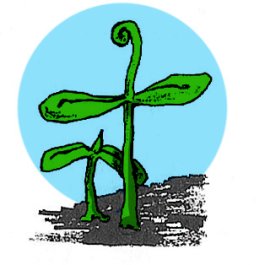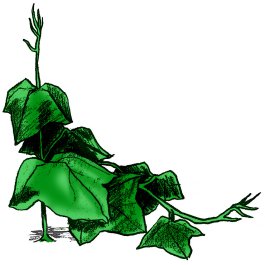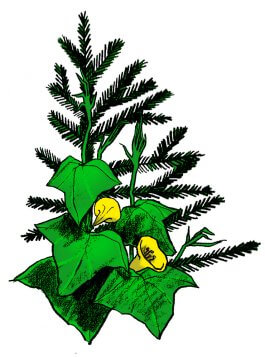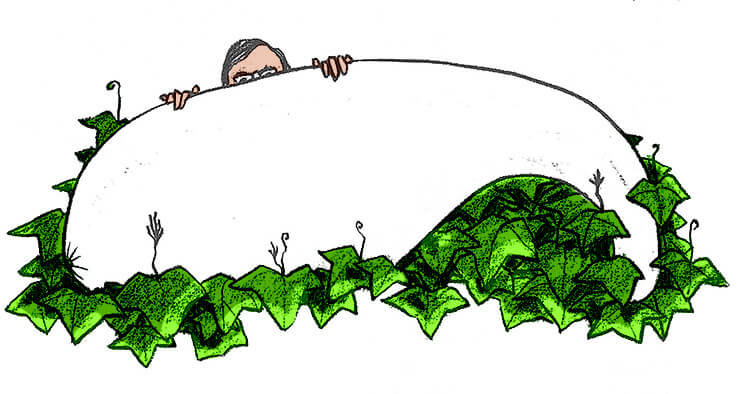Read by Michael Flamel
I thought I was planting a giant pumpkin …
(OK, class-let’s pause for a moment and review that last sentence, shall we? It’s sort of that feature in Highlights For Children where you have to ‘find all the things wrong with this picture’, isn’t it? Just roll that phrase around in your heads for a moment, fellow gardeners: “I thought I was planting a giant pumpkin.” Doesn’t it make you wonder what in the name of Everything this poor soul did do if this sad statement is the bail out???)

Years ago, Howard Dill, inventor /breeder/promoter of “Dill’s Atlantic Giant,” the variety you must grow if you hope to produce one of those lopsided prize-winning elephantitis mega-pounders, sent me a seed packet. Like 98.743% of all the other seed packets I was sent during my tenure as editor-in-chief of The world’s greatest gardening Magazine,* it sat in the basement either in a festive holiday tin container or not—depending on whether I received it before or after I noticed how fat the mice were getting. (I hope the little chewed on some of those festive holiday containers, but I digress.*)
Anyway, for some strange reason or another I decided to plant the sucker. Opened the packet. Inside was one seed, which I swear on my Sainted Aunt Eleanor was no smaller than the biggest peanut (not plain!) M&M you have ever seen. Planted this scary thing in a relatively sunny bed-which was, in enlightened retrospect (I’ve never experienced the pre-disaster variety), filled with perhaps TOO much compost-located at the farthest edge of the garden, where the vines could be directed through a very thin thicket of raspberries and thence into the woods. This was committed back in May-kind of a late start for a giant pumpkin (well, what I thought was a giant. . . ).

So, because this is my garden, two-count ’em two-squashish vines sprout from that single-seeded spot. Some men might ponder such a phenomenononononon and spend the rest of their lives developing a rational explanation for it. Other men would shout out “Miraclaeae!” and call the local Bishop in to authenticate But most men, actually would probably call hard copy and ask “What’s this worth?”
I however, posessing powers and abilities far beyond those ordinary gardening experts (Ha! you expect a * here??? Well, forget it—if you don’t know this one, you should just stick with reading Teresa Tenderhearts’s “Ode To A Sprout” on page 86),waited a couple weeks, decided which vine looked healthier, and then pulled up the other one.
The WHITE flowers opened up on the surviving vine the next day.
Not ORANGE flowers, Alice, WHITE flowers.
It was going to be a long summer.
“And then it saw the tree, officer…”
The first leaf to fully unfurl reminded me of the ones on the giant water lilies at Longwood Gardens—which I always thought looked like they belonged in an old black-and-white Tarzan movie, waiting to close up on and then digest some poor native foolish enough to trod upon them (unless said native was integral to the plot, or Tarzan happened to be close by, or Cheetah had a rock, or …)

Then summer took hold and we really didn’t look closesly over there again until a coupla months later, by which time we had pretty much lost the coastline. There was enough vineage to account for a good dozen plants, and hundreds of pretty white flowers. Using the nearby rasperry canes. like the still upright denizens of a mosh pit, the vines had traveled to and then over the nearby gully and were now into the woods on several levels-AND had traveled over top of the kudzu vine going up the telly pole and appeared to be choking it (talk about your heavyweight fights) … AND, in the nicest smothering of all, had arranged themselves quite prettily up all the sides of a 20-foot high blue spruce that had once been a live Christmas tree (well, a dozen or so little individual plastic bags, each filled with a different individual ingredient (greensand, bat guano, etc.) or blend. I had about a dozen of the displays, and so, every other day for most of a month, I’d emptied the contents of all of one’s little plastic bags into the soil near the roots.
(In science-fiction films, this is the part where I say that “No, it’s not important that the cute lizard walked in front of my electroxygenerator-nuclear-powered device when I tested it just now.” And, of course, we then proceed to lose the Chrysler Building before the popcorn gets cold.)

Deities were invoked when we found the first mutton-leg-shaped gourd, which we initially mistook for a small building. There are now four of them that we can see each looking to be well over a hundred pounds and each approaching the water displacement ability of my dog, a Great Pyrenees who was previously the largest carnivore in the neighborhood.
As I relate this tall (and fat) tale at deadline time-late in the fall, but, surprisingly no frost here yet (ha! and if I did hope to keep things going a little longer than Nature would otherwise suggest, what would I cover’ it’ with? A small commercial aircraft hangar?)-the vines have reached the top of The Artist Formerly Known As A Christmas Tree, and instead of forming themselves into a cute little Nativity Star are reaching menacingly out into the road.
I have so far managed to convince myself that this is all OK and that I have really NOT introduced something into the environment that makes genetically engineered crops seem about as threatening as a box of Mike & Ike’s in comparison.
Talk to me again in another day or two if those missing cars don’t show up . . . .
See you next ish!
![]()
MikeMcGrath ❖


 Previous
Previous



I’d like to live in the world you’re in, must be a hoot! Still driving me crazy with your woids!